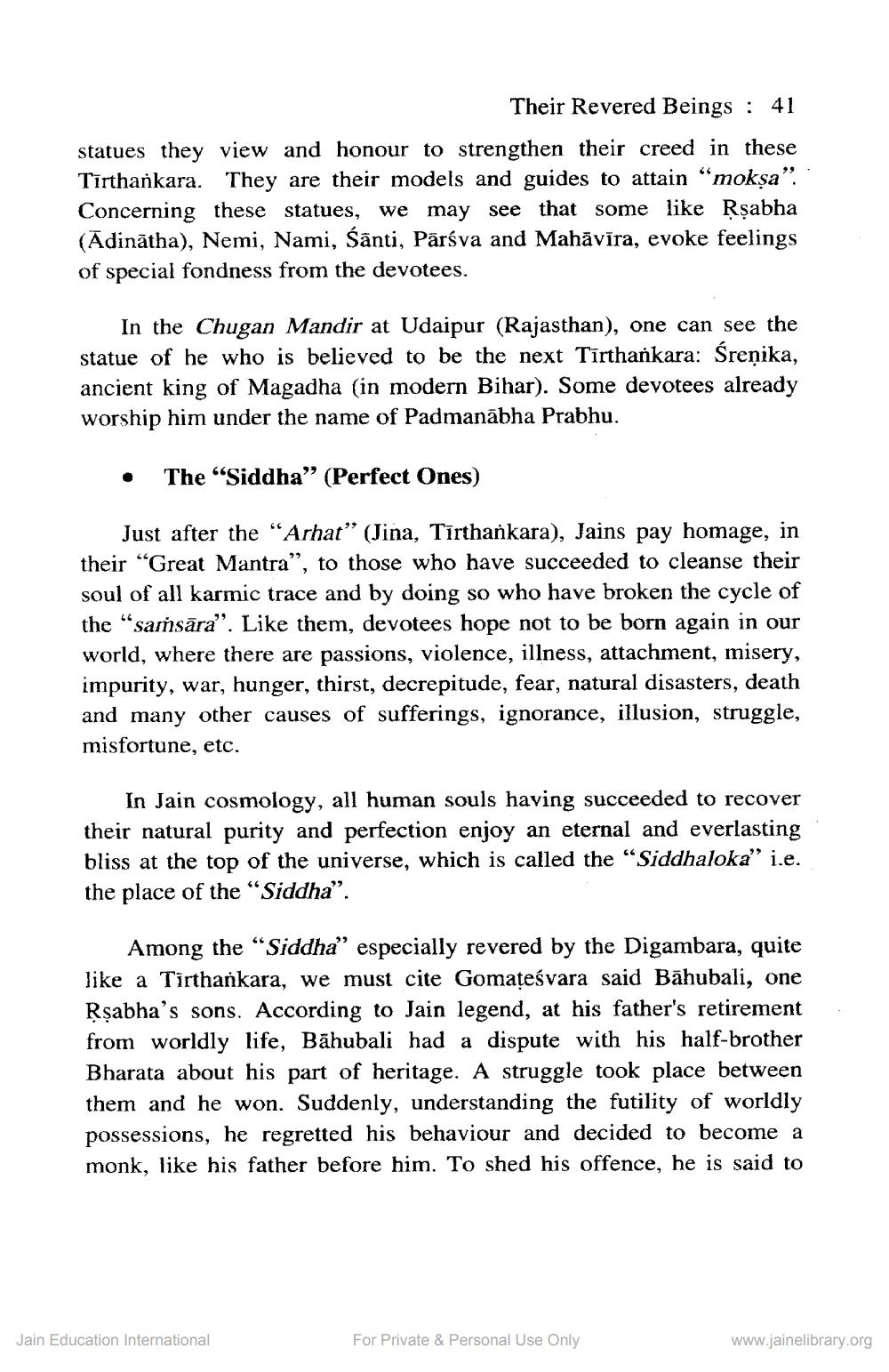________________
Their Revered Beings : 41 statues they view and honour to strengthen their creed in these Tīrthankara. They are their models and guides to attain “mokşa". Concerning these statues, we may see that some like Rşabha (Ādinātha), Nemi, Nami, śānti, Pārśva and Mahāvīra, evoke feelings of special fondness from the devotees.
In the Chugan Mandir at Udaipur (Rajasthan), one can see the statue of he who is believed to be the next Tīrthankara: Śreņika, ancient king of Magadha (in modern Bihar). Some devotees already worship him under the name of Padmanābha Prabhu.
•
The "Siddha” (Perfect Ones)
Just after the “Arhat" (Jina, Tīrthankara), Jains pay homage, in their “Great Mantra”, to those who have succeeded to cleanse their soul of all karmic trace and by doing so who have broken the cycle of the “saṁsāra”. Like them, devotees hope not to be born again in our world, where there are passions, violence, illness, attachment, misery, impurity, war, hunger, thirst, decrepitude, fear, natural disasters, death and many other causes of sufferings, ignorance, illusion, struggle, misfortune, etc.
In Jain cosmology, all human souls having succeeded to recover their natural purity and perfection enjoy an eternal and everlasting bliss at the top of the universe, which is called the “Siddhaloka” i.e. the place of the “Siddha”.
Among the “Siddha" especially revered by the Digambara, quite like a Tirthankara, we must cite Gomateśvara said Bāhubali, one Rşabha's sons. According to Jain legend, at his father's retirement from worldly life, Bāhubali had a dispute with his half-brother Bharata about his part of heritage. A struggle took place between them and he won. Suddenly, understanding the futility of worldly possessions, he regretted his behaviour and decided to become a monk, like his father before him. To shed his offence, he is said to
Jain Education International
For Private & Personal Use Only
www.jainelibrary.org




